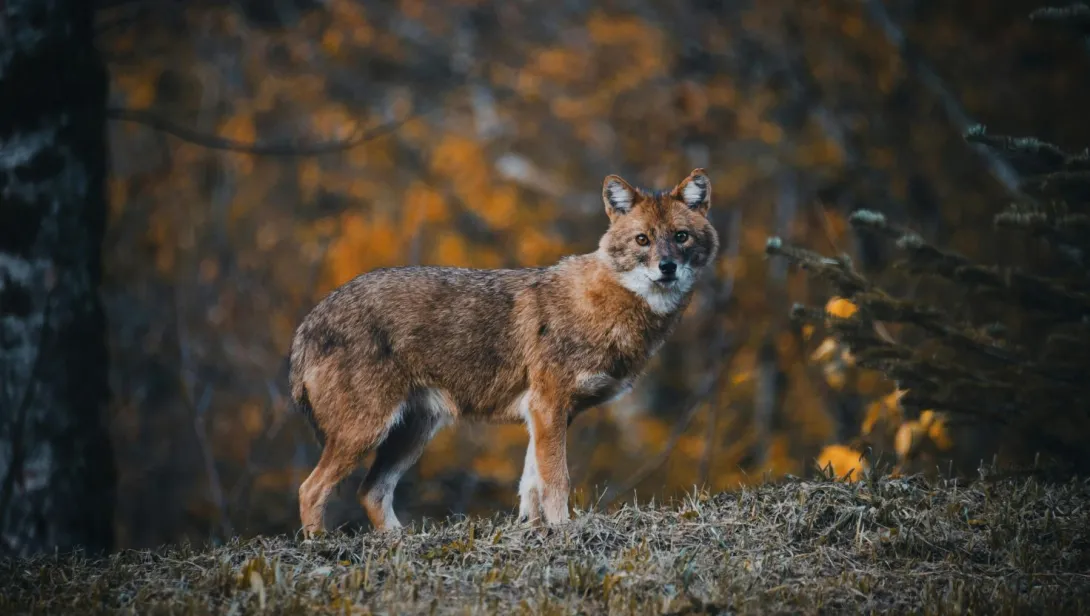Skip to main content
Introduction
- The Dhole (Cuon alpinus), also known as the Asiatic Wild Dog or Indian Wild Dog, is a highly social and cooperative canid.
- They are known for their distinctive whistling calls, which are used for communication within the pack.
- Dholes are apex predators and play a crucial role in maintaining the balance of their ecosystems.
Physical Characteristics
- Dholes have a slender, athletic build, with males weighing between 22 to 44 pounds (10 to 20 kg) and females slightly smaller.
- Their coat color varies from reddish-brown, gray, to black, with a lighter underbelly.
- They have rounded ears, a bushy tail, and a short, broad muzzle.
- Dholes have only two molars on each side of their lower jaw, unlike other canids which have three.
Habitat and Distribution
- Dholes are found in South and Southeast Asia, including countries like India, China, and Indonesia.
- They inhabit a variety of environments, including forests, grasslands, and mountainous regions.
- Dholes are nomadic, covering large territories in search of prey.
Diet and Hunting
- Dholes are carnivorous and primarily hunt medium-sized ungulates like deer, wild boar, and buffalo.
- They are cooperative hunters, relying on teamwork and strategy to take down prey.
- Dholes have a high hunting success rate, with about 80% of hunts resulting in a kill.
- They are diurnal, being most active during the early morning and late afternoon.
Behavior and Communication
- Dholes live in packs of 5 to 12 individuals, led by an alpha pair.
- They communicate through vocalizations such as whistles, screams, and growls, as well as through body language.
- Dholes are highly social, with strong bonds within the pack.
- They are territorial and mark their territory with scent markings.
Reproduction and Lifespan
- Female Dholes give birth to 4 to 6 pups after a gestation period of about 60 to 63 days.
- Pups are born in dens and are cared for by the entire pack.
- Pups stay with the pack for 1 to 2 years before becoming independent.
- Dholes have a lifespan of 10 to 12 years in the wild and up to 16 years in captivity.
Conservation Status
- Dholes are classified as Endangered on the IUCN Red List, with fewer than 2,500 individuals left in the wild.
- They are threatened by habitat loss, human-wildlife conflict, and diseases like rabies and distemper.
- Conservation efforts include protected areas, anti-poaching measures, and vaccination programs.
Unique Adaptations
- Dholes have large, rounded ears that help them hear prey and communicate over long distances.
- Their slender body and long legs allow them to travel long distances and navigate various terrains.
- Dholes are highly efficient hunters, with a success rate much higher than that of lions or tigers.
- They are diurnal, which helps them avoid competition with other nocturnal predators.
Cultural Significance
- Dholes are revered in many Asian cultures as symbols of teamwork and community.
- They are featured in mythology, literature, and art across Asia.
- In some cultures, Dholes are considered spiritual guides and protectors.
Fun Facts
- Dholes can run at speeds of up to 34 mph (55 km/h).
- They are highly vocal animals, with a wide range of sounds used for communication.
- Dholes can travel up to 30 miles (48 km) in a single day in search of prey.
- They are keystone species, playing a crucial role in maintaining ecosystem balance.
- Dholes are highly intelligent and capable of solving complex problems.
- They are not true dogs but are more closely related to wolves and jackals.
Threats to Dholes
- Habitat loss due to agriculture and urbanization is a major threat to Dholes.
- Human-wildlife conflict often results in Dholes being killed by farmers protecting livestock.
- Diseases like rabies and distemper, often transmitted from domestic dogs, are significant causes of their decline.
- Climate change is altering their habitats, making it harder for them to find prey.
Conservation Efforts
- Protected areas and wildlife reserves have been established to safeguard Dhole habitats.
- Anti-poaching initiatives and stricter wildlife protection laws have helped reduce illegal hunting.
- Vaccination programs for domestic dogs help prevent the spread of diseases to Dholes.
- Global awareness campaigns highlight the importance of Dhole conservation and encourage public support.
